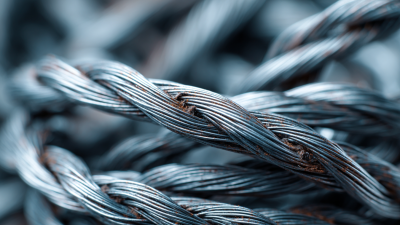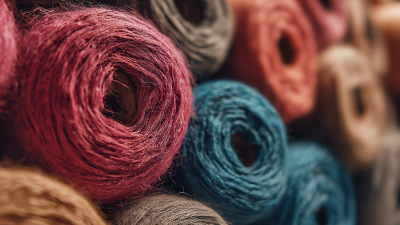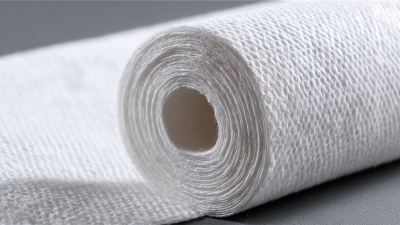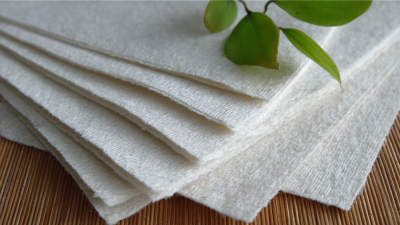Exploring the Versatility of Metal Gimped Wire: Innovative Uses in Crafting and Industry
Table of Contents
- Understanding Metal Gimped Wire: Properties and Types
- Innovative Crafting Techniques Using Metal Gimped Wire
- Industrial Applications of Metal Gimped Wire in Modern Manufacturing
- Creating Unique Jewelry Designs with Metal Gimped Wire
- Tips for Selecting and Working with Metal Gimped Wire in Projects
- Exploring Sustainability: Eco-Friendly Practices with Metal Gimped Wire
- FAQS
- Conclusion
- Related Posts
In the world of crafting and industrial applications, the versatility of Metal Gimped Wire is truly groundbreaking. This innovative material not only enhances aesthetic appeal but also provides essential functionalities, particularly in the realm of electromagnetic interference (EMI) shielding—a key focus for Shijiazhuang Shielday Technology Co., Ltd. As an advanced manufacturer of high-performance EMI shielding textiles and conductive wires, Shielday Technology is at the forefront of harnessing the unique properties of Metal Gimped Wire. Its adaptability makes it suitable for a variety of uses, from artistic endeavors in crafting to critical applications in technology and manufacturing.

This introduction will explore the myriad innovative uses of Metal Gimped Wire, highlighting how it can revolutionize both personal projects and industrial standards while reflecting Shielday Technology’s commitment to quality and customization in developing superior products.
Understanding Metal Gimped Wire: Properties and Types
Metal gimped wire is a unique material that has gained attention in various industries due to its distinctive properties. Typically composed of thin metal strands twisted together, this wire exhibits flexibility and strength, making it ideal for numerous applications. Its versatility leads to innovative uses across crafting and industrial sectors, ranging from jewelry making to automotive engineering. According to recent market analysis, the demand for specialized metal wires is anticipated to grow at a CAGR of 5.2% over the next five years, indicating a rising popularity in creative and structural applications.
In crafting, metal gimped wire allows artisans to create intricate designs and enhance the durability of their projects. The wire can be manipulated easily, which is crucial for artists looking to add detailed embellishments or structural elements to their work. Each type of metal used in gimped wire, whether aluminum, brass, or copper, offers distinct visual qualities and physical properties, catering to specific aesthetic and functional needs. This adaptability is further supported by emerging technological advancements in metalworking and design, positioning metal gimped wire as a foundational material in contemporary crafting and manufacturing practices.
Exploring the Versatility of Metal Gimped Wire: Innovative Uses in Crafting and Industry
| Property | Description | Common Uses |
|---|---|---|
| Material Composition | Usually made from aluminum, brass, or stainless steel. | Crafting jewelry, decorative items. |
| Durability | Highly resistant to corrosion and wear, suitable for outdoor use. | Outdoor decorations, garden sculptures. |
| Flexibility | Can be easily shaped and molded into various forms. | Art installations, custom fittings. |
| Conductivity | Good electrical conductivity, depending on the metal used. | Electrical connectors, circuit boards. |
| Finish | Available in various finishes such as polished, matte, or anodized. | High-end jewelry, modern art pieces. |
Innovative Crafting Techniques Using Metal Gimped Wire
Metal gimped wire, celebrated for its unique properties, is finding innovative applications in both crafting and industrial settings. Craftspeople are increasingly embracing this versatile material due to its durability and aesthetic potential. It can be employed in intricate jewelry design, offering a metallic sheen that enhances the overall artistry of the piece. Additionally, metal gimped wire serves as a foundational element in mixed media art, allowing artists to experiment with structural integrity while maintaining a refined appearance.
In industrial applications, the emergence of advanced technologies is reshaping how metal gimped wire is utilized. Recent developments in metal recovery techniques from mining waste highlight the wire's critical role in sustainable practices. Companies are leveraging these innovative methodologies to extract high-value metals, reducing environmental impacts and optimizing resource use. As industries continue to explore the benefits of metal gimped wire, its potential for creative and practical uses only expands, making it an essential material for the future.
Industrial Applications of Metal Gimped Wire in Modern Manufacturing
Metal gimped wire is rapidly finding its place in modern manufacturing, particularly in the realms of renewable energy and sustainable practices. This innovative material is being utilized in various applications from the construction of wind turbine frameworks to the assembly of solar panels. Its unique properties allow for lightweight yet sturdy components that enhance the efficiency and durability of energy solutions. As industries strive to reduce their carbon footprints, the adoption of metal gimped wire not only supports this goal but also aligns with the increasing demand for sustainable production methods.
In parallel, advancements in manufacturing technologies, such as wire-based additive manufacturing, are showcasing the versatility of materials like metal gimped wire. These developments facilitate faster production cycles and more flexible design options, essential for meeting the dynamic demands of today's industry. Companies specializing in advanced materials are stepping into this space, offering custom solutions that cater to the specific needs of various sectors. As manufacturers navigate these challenges, the role of innovative materials like metal gimped wire becomes increasingly crucial, merging performance with sustainability in an ever-evolving market landscape.

Creating Unique Jewelry Designs with Metal Gimped Wire
Metal gimped wire has emerged as a favored material in the jewelry-making sector, thanks to its unique characteristics that blend flexibility and durability. This wire, typically made from metals like copper or aluminum and often coated with vibrant colors, allows artisans to create one-of-a-kind designs that are both lightweight and visually striking. According to a report by Global Industry Analysts, the global jewelry market is projected to reach $480 billion by 2025, highlighting an increasing demand for innovative materials and techniques within the industry.

Crafting with metal gimped wire not only enables the design of intricate patterns but also enhances the overall aesthetic appeal of jewelry pieces. Jewelry makers can manipulate the wire into various shapes, incorporating beads and other embellishments to create distinctive items like earrings, bracelets, and necklaces. Tips for beginners include experimenting with different gauges of wire to find the right balance between sturdiness and bendability, and ensuring that the ends of the wire are properly secured to avoid snagging or injury.
For those looking to elevate their creations, consider integrating metal gimped wire with alternative materials, such as leather or textiles, for mixed-media designs that stand out in the marketplace. Additionally, showcasing your unique jewelry on platforms like Etsy can expand your reach, as the online crafts market is expected to grow by 20% annually, creating exciting opportunities for creative entrepreneurs.
Tips for Selecting and Working with Metal Gimped Wire in Projects
When selecting metal gimped wire for your projects, it’s essential to consider the diameter and type of metal. Thicker wire provides strength and durability, making it suitable for structural components in crafting, while thinner wire offers flexibility for intricate designs. Copper, aluminum, and brass are popular choices, each bringing unique qualities; for instance, copper is highly malleable and great for complex shapes, while aluminum is lightweight and resistant to corrosion.
Working with metal gimped wire requires a mix of tools and techniques to achieve the desired results. Pliers, wire cutters, and a bending jig can help shape the wire accurately. Be sure to take proper safety precautions, including wearing eye protection when cutting or bending wire, as it can create sharp edges. Experimenting with different techniques, such as wrapping, weaving, or coiling, can yield innovative results, whether for decorative crafts or functional items.
Exploring Sustainability: Eco-Friendly Practices with Metal Gimped Wire
Metal gimped wire offers vast potential not just in crafting but also in promoting sustainable practices within various industries. As global awareness of environmental issues rises, innovative uses of this metal wire can contribute to eco-friendly solutions. For instance, using recycled metal gimped wire in art and design reduces waste while supporting the recycling economy, which is projected to reach a market value of $403.06 billion by 2025.
Tips: When crafting with metal gimped wire, consider sourcing materials from local recycling centers. This not only helps you find unique textures and colors but also supports local sustainability efforts. Furthermore, integrating this wire into projects can significantly reduce your carbon footprint.
Moreover, the ongoing evolution of the recycling industry, particularly in metals, emphasizes the importance of circular economies. By integrating metal gimped wire into products, manufacturers can create more sustainable outputs, promoting responsible consumption and waste management.
Tips: Look for workshops or communities focused on metal crafting to share knowledge about sustainable practices. Collaborating with others can enhance your projects while fostering a commitment to eco-friendly materials.
FAQS
: Metal gimped wire is a unique material composed of thin metal strands twisted together, known for its flexibility and strength, making it suitable for various applications in crafting and industrial sectors.
Metal gimped wire is used in jewelry making, mixed media art, and automotive engineering, among other applications that benefit from its durability and aesthetic qualities.
The demand for specialized metal wires is expected to grow at a CAGR of 5.2% over the next five years due to its versatility and innovative uses in creative and structural applications.
It allows artisans to create intricate designs and adds durability, as it can be easily manipulated for detailed embellishments and structural elements in their work.
Common types of metals used in gimped wire include aluminum, brass, and copper, each offering distinct visual qualities and physical properties suitable for different aesthetic and functional needs.
Emerging technological advancements in metalworking and design are enhancing how metal gimped wire is utilized, particularly in sustainable practices such as metal recovery techniques from mining waste.
Companies are using innovative methodologies to extract high-value metals from mining waste, which reduces environmental impacts and optimizes resource use while using metal gimped wire.
Metal gimped wire provides structural integrity while maintaining a refined appearance, allowing artists to explore various techniques and create unique artistic expressions.
Yes, metal gimped wire is often used as a foundational element in mixed media art, allowing for experimentation with different materials and enhancing overall design.
Metal gimped wire offers a metallic sheen that enhances the artistry of jewelry pieces, making it a popular choice among jewelry designers for creating visually striking items.
Conclusion
Metal Gimped Wire is a versatile material that plays a significant role in both crafting and industrial applications. Its unique properties allow for innovative crafting techniques, enabling artisans to create intricate designs and durable products. In industries, Metal Gimped Wire finds use in modern manufacturing processes, particularly in the production of high-performance EMI shielding textiles and conductive wires, which are essential in various technology-driven sectors.
Incorporating Metal Gimped Wire into jewelry design offers artists creative freedom to explore unique styles, while its sustainable aspects promote eco-friendly practices in production. For those looking to use this material, selecting the right type and understanding its properties are crucial for project success. As demonstrated by companies like Shijiazhuang Shielday Technology Co., Ltd., which specializes in advanced shielding textiles and wires, the potential of Metal Gimped Wire continues to expand as a valuable asset in crafting and industry.
Related Posts
-

Essential Insights: Your Comprehensive Guide to Metal Gimped Wire Applications and Benefits
-

Exploring Innovative Applications of Yarn Spuns Pbo Fiber in Modern Textiles
-

Discover the Future of Wearable Technology with Conductive Yarn Innovations
-

5 Essential Tips for Choosing Silver Conductive Fabric for Your Project
-

Mastering Ef Nonwoven Fabric Techniques for Innovative Applications
-

Essential Checklist for Sourcing Bamboo Fiber Nonwoven Fabric: Key Factors to Consider
Blog Tags:

